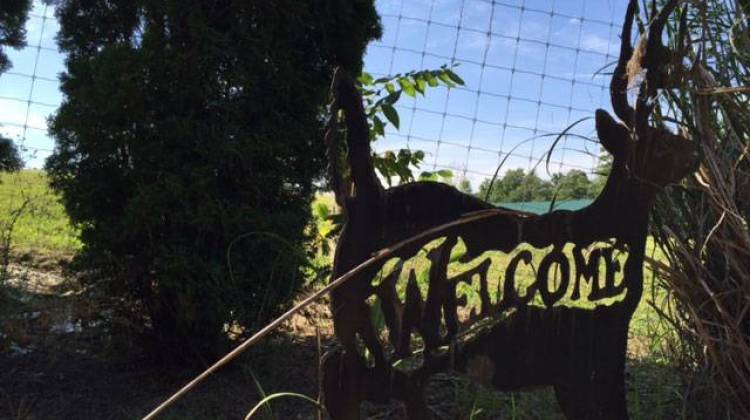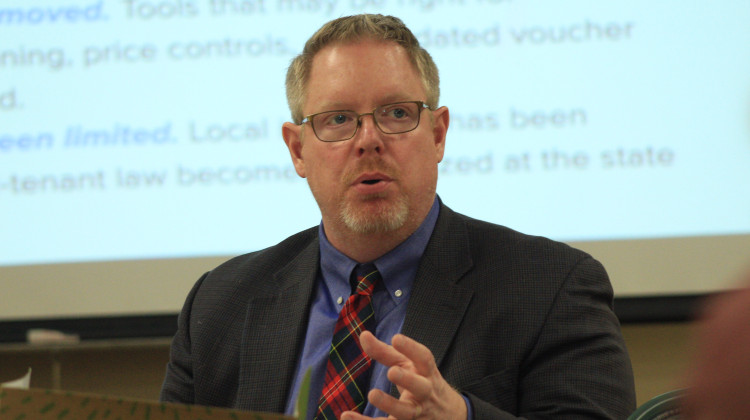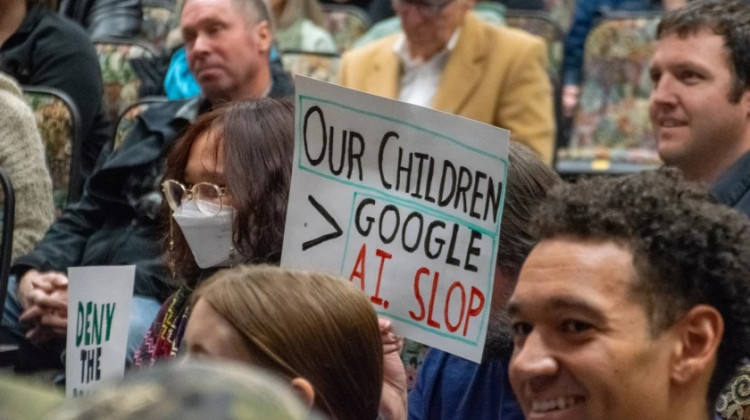
Whitetail Bluff LLC in Corydon is one of four fenced hunting preserves in Indiana. Although it's currently legal and unregulated, the future of the industry is being debated by Hoosier lawmakers.
Payne HorningCORYDON, Ind. -- The debate on whether to regulate or ban fenced hunting preserves is alive again. A June decision from the Indiana Supreme Court struck down a 2005 ban from the Department of Natural Resources (DNR). Now, the industry is virtually unregulated.
That decision was welcome news for Rodney Bruce owner and operator of Whitetail Bluff LLC hunting preserve in Corydon, Indiana. His fenced hunting preserve is one of only four in the state. Each is stocked with farm-raised deer where clients pay a premium to hunt and leave with a specimen they kill.
Critics of the industry call it ‘canned hunting’ and question its ethics. But, Bruce calls the preserve the “best Midwest whitetail hunting experience available.”
“It’s an easy sell,” Bruce said. “Oh my god, they pin them deer up and kill ‘em! You just simply don’t know what’s out here.”
The 116-acre property is surrounded by an eight-foot fence. The preserve is lush with trees, vegetation and, of course, deer.
“You know, people envision a pin,” Bruce said. “The reason we have a fence – it’s a management tool. It’s so the neighbors can’t shoot everything that walks.”
Bruce said his preserve doesn’t offer hunters an unnatural advantage.
“You have to hunt it just like you would anything else. You don’t take away a deer’s ability to see, hear, smell or run. You don’t affect any of that by having a place like this.”
But that’s not an easy sell for all. Opponents of fenced hunting preserves point out that some owners guarantee their clients a buck and charge exorbitant amounts for it. Some make good on that promise by drugging the animals or luring them into a line of fire with feeding stations.
Bruce doesn’t allow such practices at his preserve and he doesn’t promise his clients that they will leave with a deer, but that’s by choice. Industry owners in Indiana aren’t currently regulated because a recent decision from the Indiana Supreme Court ended the Department of Natural Resources authority over the preserves.
Goshen Republican Sen. Carlin Yoder said the industry is now like the Wild West.
“Anybody, frankly, could go out and put a hunting preserve on three acres of land if they so chose because there’s nothing in the state of Indiana to prevent that,” Yoder said.
Yoder tried to regulate the industry with bills in 2014 and 2015. The legislation would have banned drugging deer before a hunt, shooting animals near feeding stations and required annual inspections from the DNR. But, both times it was narrowly defeated in the Senate.
Avon Republican Sen. Pete Miller was one of the bills’ most vocal critics. He authored legislation this past session that would have banned the practice entirely, but it didn’t receive a committee hearing.
“My opinion, as well as many other hunting groups as well, don’t see this as a fair chase, don’t see this as a sport,” Miller said. “For it to be a sport then there has to be a chance of the animal to win that chance.”
Miller said the risk of disease is a leading reason why he opposes the fenced preserves.
Ball State biology professor Tim Carter said the preserves can increase the risk of animal diseases such as bovine tuberculosis and Chronic Wasting Disease – a deer equivalent to Mad Cow Disease.
“You can see where it has popped up throughout the United States and in every case it’s some kind of game preserves where they have been moving animals from one spot to another and it establishes and then it starts to spread,” Carter said.
Those diseases can spread to wildlife by contact with infected animals through the fence.
“Once you set a disease free you can’t call it back, and so that is really the biggest concerns with these preserves is the potential for them to infect the natural, native animals and then we can’t control that,” Carter said.
Industry leaders are taking action amidst the legislative stalemate. The Indiana Deer Farmers Association, State Board of Animal Health and preserve owners like Bruce have formed the Deer Advisory Council. It’s currently developing guidelines and standards for the industry, but compliance with any rules developed by the Deer Advisory Council would be entirely voluntary, setting the stage for the General Assembly to try, once again, to regulate the industry next year.
 DONATE
DONATE







 Support WFYI. We can't do it without you.
Support WFYI. We can't do it without you.